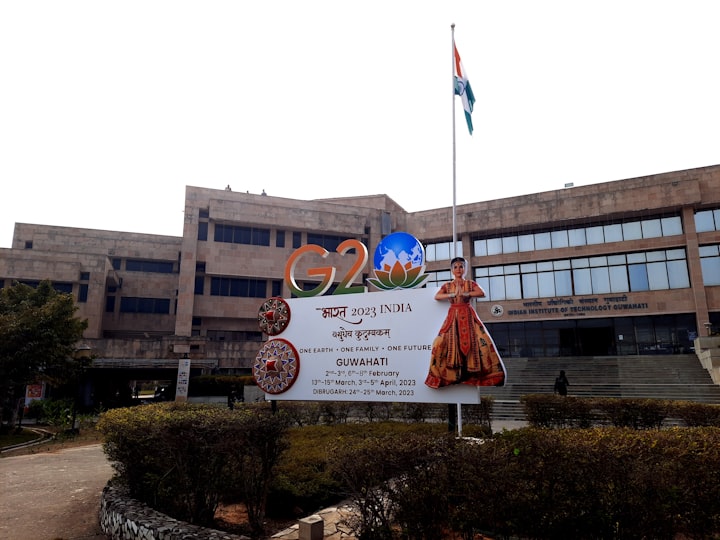
What Is G20?
After the Asian financial crisis of 1997-98, an informal forum called the G20 was formed in 1999, bringing together finance ministers and central bank governors from major industrialized and developing economies. There will be discussions on international economic and financial stability.
G20 means a group of 20 countries. The G20 countries are as follows
1. Argentina
2. Australia
3. Brazil
4. Canada
5. China
6. France
7. Germany
8. India
9. Indonesia
10. Italy
11. Japan
12. Republic of Korea
13. Mexico
14. Russia
15. Saudi Arabia
16. South Africa
17. Turkey (Türkiye)
18. United Kingdom (United Kingdom)
19. United States and
20. European Union
There are countries like
Do you know
G20 members represent 85% of global GDP, 75% of global trade and two-thirds of the world's population.
The G20 is the premier forum for international economic cooperation. It plays an important role in managing all major international economic problems and in bringing people together to build and strengthen the world. The G20 does not have a permanent secretariat or staff. Instead, the post of G20 leader is elected on an annual rotating basis among members and from a different regional group of countries.
These 19 member states are divided into five groups comprising a maximum of four countries each. Most groups are formed on the basis of territory, which means that countries belonging to the same territory are usually placed in the same group.
Group 1 (Australia, Canada, Saudi Arabia, and the United States) and Group 2 (India, Russia, South Africa, and Turkey) are not divided geographically.
Group 3 consists of Argentina, Brazil and Mexico , Group 4 consists of France, Germany, Italy and the United Kingdom and Group 5 consists of China, Indonesia, Japan and the Republic of Korea.
Each year a country from a different group assumes the G20 presidency. Each of the countries in a group has the right to assume the presidency when it is the turn of their group.
India currently holds the current presidency of the G20 from Group 2, from 1 December 2022 to 30 November 2023. It is a responsibility of the G20 Chair, in consultation with other members, to coordinate the G20 agenda in response to developments in the global economy. To ensure continuity, the presidency is supported by a "troika" made up of current, past and future countries.
G20 STRUCTURE:
Sherpa Track:
This will happen under the leadership of the current president. It will focus on socio-economic issues. that is,
Agriculture, Anti - Corruption, Climate, Digital Economy, Education, Employment, Energy, Environment, Health, Tourism, Trade and investment.
Groups operating under this track are:
- Agriculture Working Group
- Anti-corruption Working Group
- Culture Working Group
- Development Working Group
- Digital Economy Working Group
- Disaster Risk Reduction Working Group
- Education Working Group
- Employment Working Group
- Energy Transitions Working Group
- Environment and Climate Sustainability Working Group
- Health Working Group
- Tourism Working Group
- Trade and Investment Working Group
Finance Track :
It is chaired by finance ministers and central bank governors and usually meets four times a year. It is four meetings, two under the World Bank and two under the International Monetary Fund.
It will focus on fiscal and monetary policy issues etc. That is
Global Economy, Infrastructure, Financial Regulation, Financial Inclusion, International Financial Architecture, International Taxation.
Groups operating under this track are:
- Framework Working Group
- International Financial Architecture Working Group
- Infrastructure Working Group
- Sustainable Finance Working Group
- Global Partnership for Financial Inclusion
- Joint Finance and Health Task Force
- International taxation issues
- Financial Sector Issues
Initiatives:
Research and Innovation Initiative Gathering Apart from the Sherpa Track Working Groups Research and Innovation Initiative Gathering (RIIG) is an organization that aims to promote, intensify and strengthen cooperation in research and innovation among G20 member countries.
This is just the beginning of the G20, a huge step forward for all 20 countries. We will see how in subsequent posts. Post your comments about this post below.
You may also like my other posts. Click here to read.
About the Creator
San Tosh
Hi, my name is San Tosh and I'm a 28 years old blogger. My blog mainly focuses on Parenting & family life but I also write about personal development, productivity, and lifestyle.






Comments
There are no comments for this story
Be the first to respond and start the conversation.